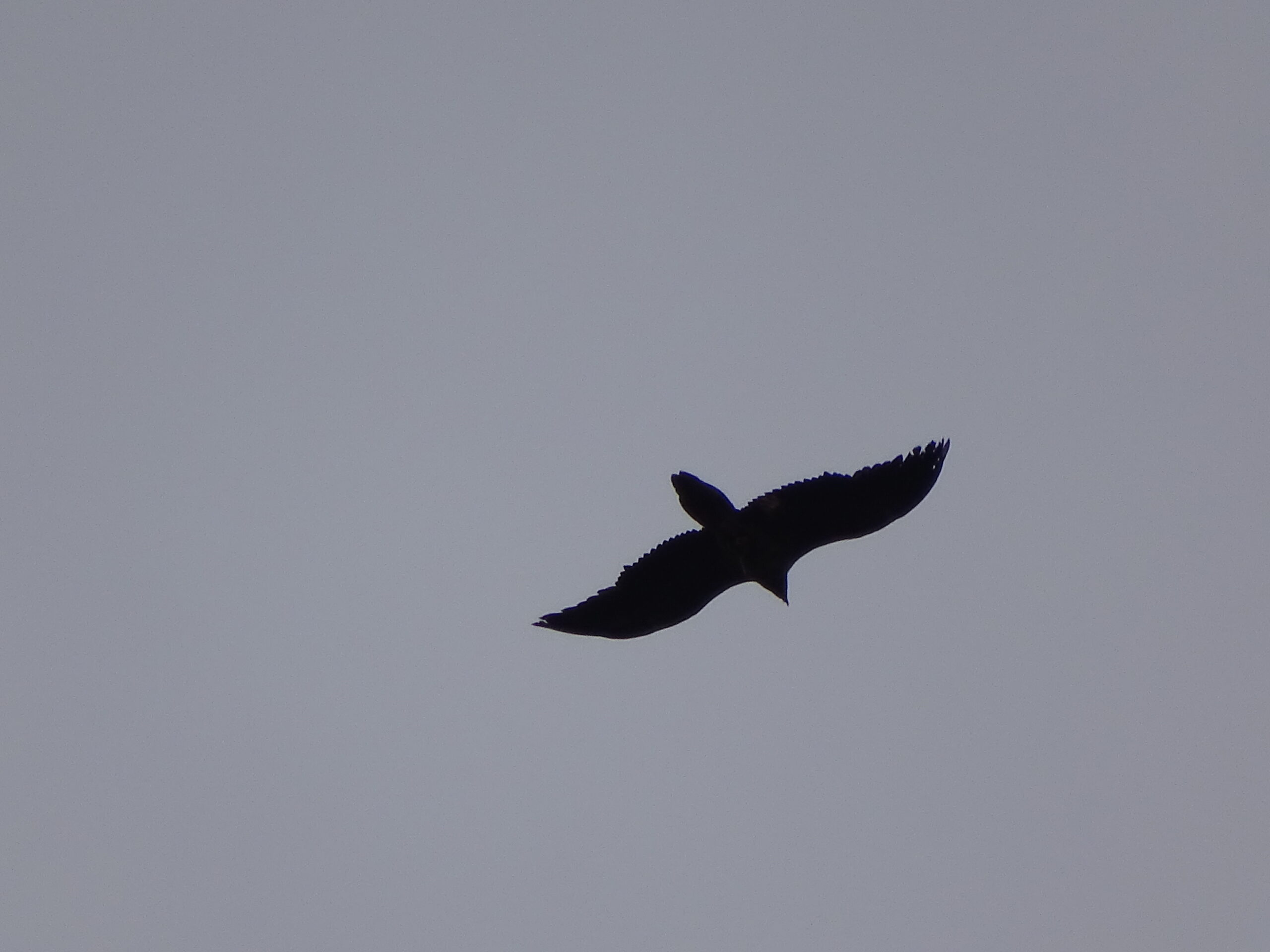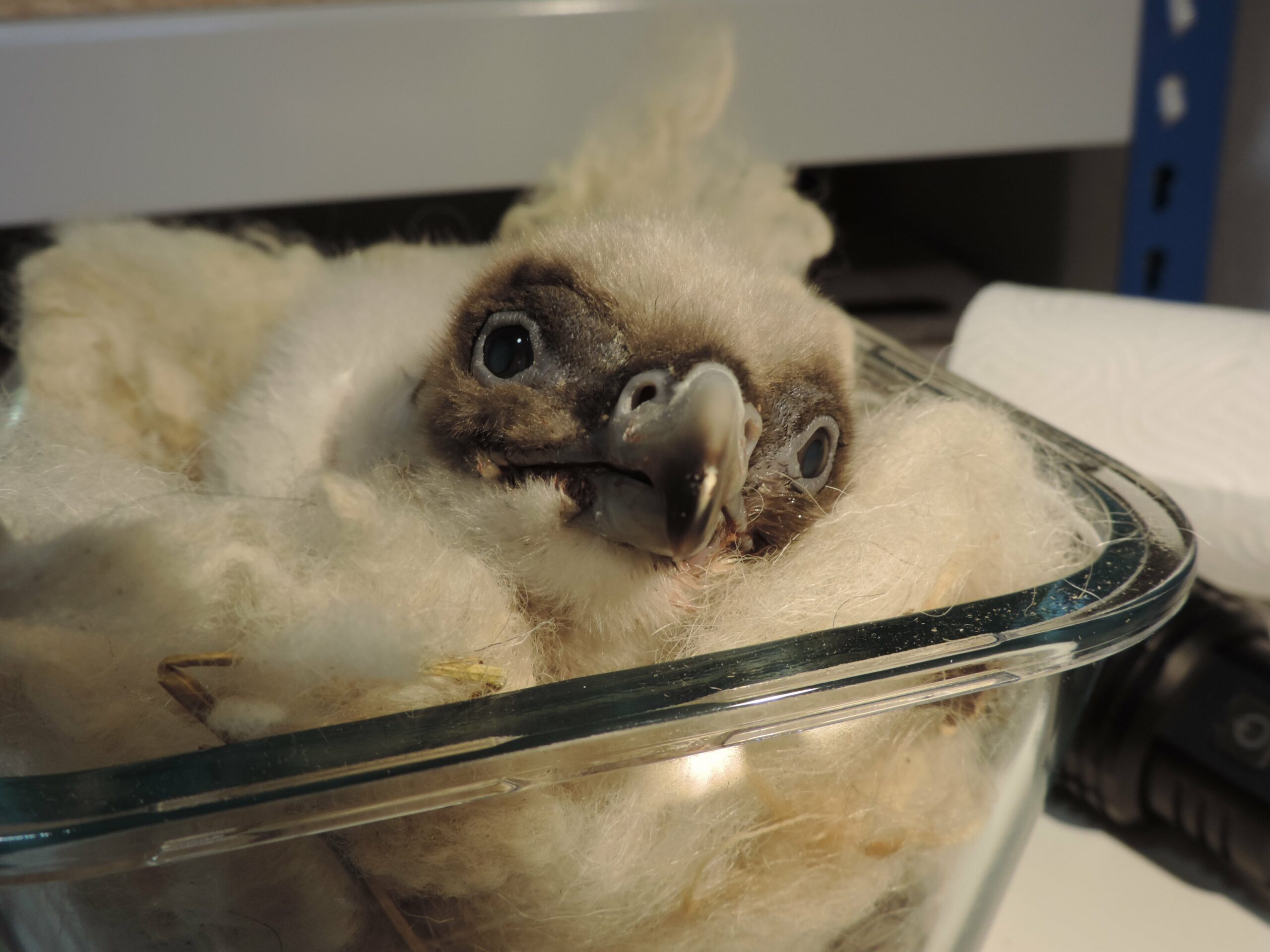
Bearded Vulture pairs in Europe are currently extra busy with their parental duties during the ongoing breeding season. In the Alps, the first clutch arrived in mid-December in Valle del Braulio, Italy, which hatched a chick in early February! These amazing vultures have been braving blizzards, snow and cold temperatures in European mountain ranges, looking after their clutches and chicks. In the Alpine chain, local partners monitor the species’ reproduction progress from a safe distance and report it at the International Bearded Vulture Monitoring Network (IBM), coordinated by the Vulture Conservation Foundation (VCF). In this blog post, we are thrilled to share the species’ preliminary breeding results in the Alps, which seem promising so far!
Bearded Vulture Breeding Season in the wild
Bearded Vultures are the earliest breeders of the four European vulture species. Bearded Vultures in the Alps usually start to lay eggs in late December and continue up until February, with parents sharing brooding responsibilities until the chick hatches after an average of 54 days. This special breeding period is related to the diet of the chicks, which cannot digest bone, so the species has evolved to hatch towards the end of winter when there is potentially a plentiful supply of food. This includes animals that died from avalanches and are then exposed in the thawing snow or animals that die towards the end of the season from not surviving harsh conditions, leaving enough animal carcasses for the parents to feed their chicks.
Ongoing breeding results in the Alps
This year’s breeding season got off to an early start, and is going well so far. Based on our local IBM partners’ reports, breeding occurred in 55 from the 69 monitored territories, and several nestlings already arrived across the region. Two chicks hatched in the Eastern Alps in Austria, 12 in the Central Alps in Austria, Switzerland and Italy, eight in the North-Western Alps in Switzerland, France and Italy and five in the South-Western Alps in France. With a new occupied territory Archiane in Vercors in France, the most western territory in the Alpine population, nine territories have been reported where no breeding has been observed before.
We hope we get news of the first fledgling soon! We want to thank our partners for monitoring the species, and taking the appropriate precautions. This period is extremely sensitive for Bearded Vultures, and any disturbance can result in unsuccessful breeding — please don’t approach nests and keep your distance.
Bearded Vulture reintroduction in the Alps

The species was driven to extinction in the Alps during the 20th Century, and to bring them back, pioneers from all Alpine countries initiated the reintroduction project in the 1970s. The first birds were released in 1986 at Hohe Tauern National Park (Austria), and in 1997 the first breeding pair successfully raised a chick in the wild in France.
Today, there are between 250 and 300 Bearded Vultures, including 58 breeding pairs, across the Alps. This reintroduction project has sparked the imagination and gathered the support of many stakeholders across the Alpine chain and is considered one of the best wildlife comeback stories of all times!
To stay tuned with Bearded Vultures in Europe, subscribe to the VCF’s newsletter!
International Bearded Vulture Monitoring Network (IBM)

The International Bearded Vulture Monitoring Network (IBM) is a unique international collaboration led by the Vulture Conservation Foundation between national & natural parks and non-governmental organizations to coordinate the monitoring activities for European Bearded Vulture populations. Through this network, data about the Bearded Vulture in Europe is collected, shared and made available to everyone working for the conservation of the species. The IBM-network also uses this data and comes together to discuss conservation strategies and priorities for this species on an international level. There are currently 16 partners and two associated organizations part of the IBM-network.
If you have any Bearded Vulture observations and photographs in the Alps, please report them here.





